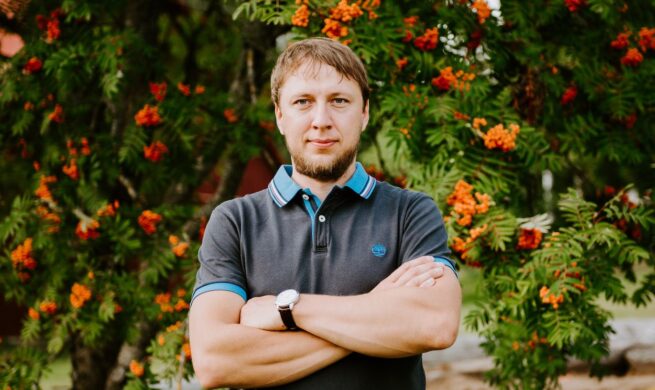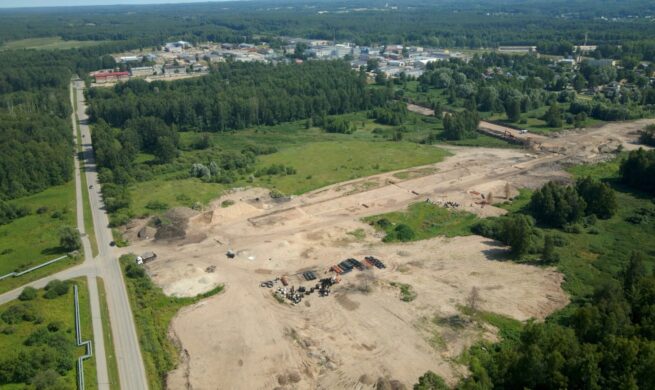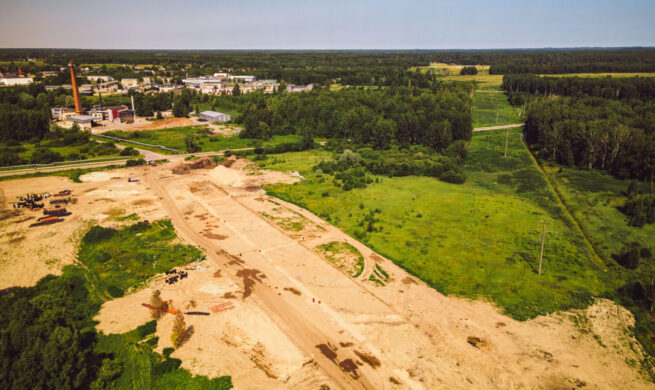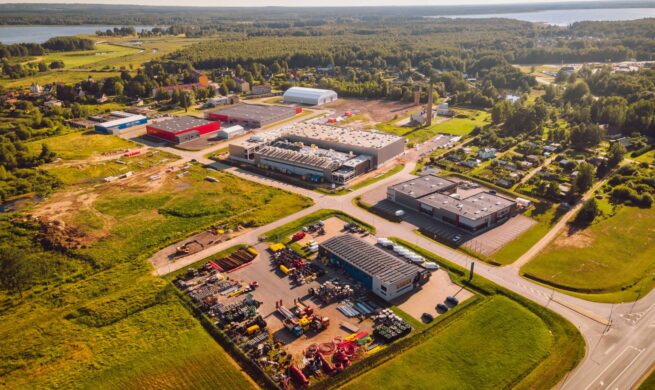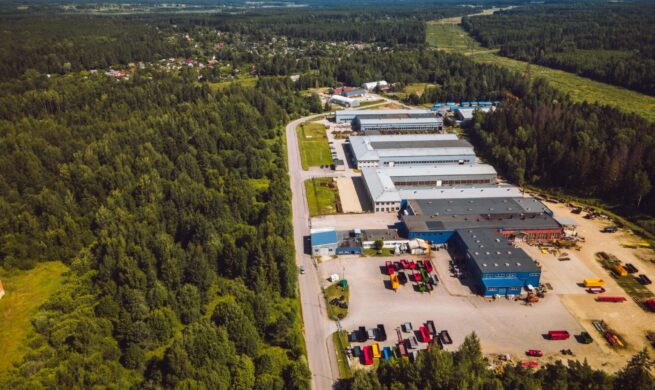Raul Karev, Võru County Development Centre Foundation
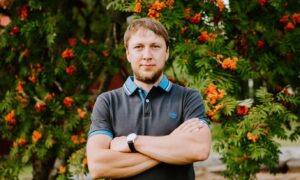
When a modern plywood factory was established on the site of the former car repair factory in Otepää at the turn of the last century, the town was mainly known as a ski resort and winter capital of Estonia. At the time, some even thought that large-scale production is not suitable for a small town. Today, exactly 20 years later, this south Estonian factory producing high-quality birch plywood is the largest in Estonia, being the immediate employer of 240 local people and many more through partnerships.
Following the success of the plywood factory, the area, once considered a periphery, is slowly but surely gaining popularity as a pleasant and profitable business environment. There are specific reasons for this.
If you ask a random Estonian to name the keywords that they associate with ‘southeast Estonia’, then an attractive and growing business environment will most likely not be at the top of the list – instead, people associate it with thick forests, a landscape of rolling hills, and excellent recreational opportunities. It is, however, indeed an attractive and growing business area! In terms of innovative and higher value-added entrepreneurship, it is no longer just a distant dream of the locals, which is also supported at the state, county and rural municipality level at every step, but also an increasingly prominent reality.
One of the pioneers of the new era is located right next to Otepää. The plywood produced in this UPM Group factory is exported to locations all around the world. The plywood known under the UPM WISA brand is used, for example, as a base material for heavy-duty trailers. A well-kept secret is that a significant part of birch plywood made in southeast Estonia is used far away in South Korea, where the container components of liquefied natural gas (LNG) tankers are built. ‘It is possible that we are the most well-known Estonian company for South Korea,’ says Silver Rõõmussaar, the factory manager of UPM Otepää, jokingly.
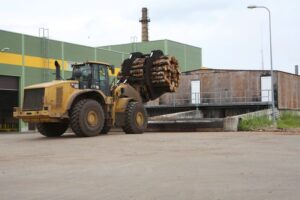
He is proud that their factory is able to value local wood so highly. Container components for gas tankers are technologically complex and there are only a few companies in the world that have certificates for such production.
Otepää Plywood Factory stands out for its good financial results. According to the manager of the factory, the cornerstones of good results are a stable economic environment, a favourable tax system, high-quality raw materials, and a stable and curious staff.
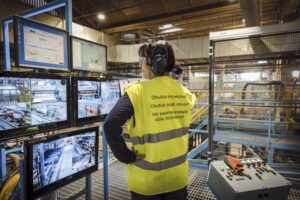
High amount of birch wood within a radius of 50 km
The plywood industry, which initially began as an Estonian-Finnish joint venture and has now been a full member of the Finnish UPM Group for 18 years, started from the fact that there are sufficient high-quality birch trees in southern Estonia, gaining further support from the existence of suitable buildings on the area of Otepää’s former car repair factory.
Birch is a common tree species and continues to be sufficient in Estonia today as well. How else would the factory have been able to gradually increase its production capacity from 20,000 cubic metres per year to 90,000 cubic metres? According to the factory manager Silver Rõõmussaar, however, this is not the only advantage. ‘The locals here are very loyal, having contributed to the development of the company for many years,’ he notes. ‘We are clearly lucky because the majority of the people in this area value great cooperation and job stability the most.’
And the salary levels are not bad either, somewhat above the Estonian average. And much higher than the average in Valga County. In the first half of 2021, the average salary of the UPM-Kymmenen Otepää factory amounted to 1,615 euros.
The owners of the Otepää plywood factory have invested more than 40 million euros in the area in recent years. This includes, among other things, setting up its own woodchip heat production. Given the company 50 million annual turnover and an average profitability of 10–20%, it is not difficult to recoup this investment within a reasonable time.
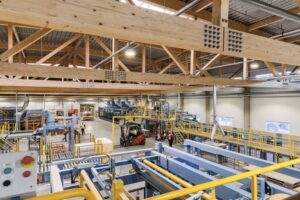
The rural municipality offered a helping hand
Silver Rõõmussaar recalls that when the factory was established in Otepää, the support of the local municipality was evident. He hopes that today rural municipality leaders will be equally understanding in terms of new developments. This is a peculiarity as well as an advantage of small places that a large number of municipalities take the investor concerns very personally and try to be as accommodating as possible.
Rõõmussaar admits that in a normal situation, without the active contribution of rural municipality leaders, the planning of production areas could take as long as five or six years, which is too long for most entrepreneurs. ‘Although the rural municipalities do not yet have a direct financial motivation to support production, it is still important for them that more people come to the rural municipality and that new specialists settle here. This is direct income for the municipality. And when an investor has such a perspective to offer, they are generally ready to provide comprehensive support.’
New plots in anticipation of new companies
Having been positively inspired by his own experience, the manager of UPM-Kymmene Otepää factory believes that there is still room in the area for several smaller production and service companies. Some of them would also be welcome to become UPM partners. ‘With so many opportunities, it is important to find your own niche, ideally supporting the already established business environment,’ observes Rõõmussaar enthusiastically. ‘For example, both we and our neighbouring companies use a lot of cars and heavy trucks that need repair and maintenance. If
someone came and set up a repair workshop, I believe that they would have enough customers from this immediate area alone.’
According to Rõõmussaar, however, there is also existing demand for companies that would value the plywood leaving UPM factory in a new and useful way. ‘It is pleasant to work here, with extremely kind and hard-working people, unique leisure and sports opportunities that you can find anywhere else in Estonia,’ he claims confidently.
In order to attract new companies and investments to the region, UPM has undertaken to build a small production park. ‘Otepää municipality is currently processing the plan on a 10-hectare plot of land. I believe that in addition to the six companies in the Hundisoo area, there is room for a couple more companies to operate here alongside us. This will create new jobs and opportunities to speed up the development of the region.’
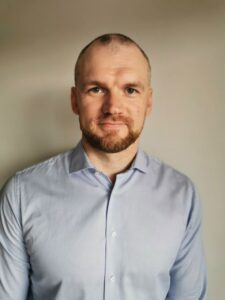
Southeast Estonian municipalities contribute to cooperation
Asso Uibo, Enterprise Estonia foreign investment consultant in the South Estonia region, confirms that at the moment it is indeed a very good time to invest in southeast Estonia and establish new small productions. And this does not apply only to the establishment of production, but also to the establishment of companies providing administrative and support services. He is referring to the Southeast Estonia Programme, born out of cooperation between the municipalities of southeast Estonia and the state, and the support measures contained therein.
He cites the increasingly active network of rural municipalities in the region as the reason why entrepreneurs should look to southeast Estonia, where it is common practice to try to process plans very quickly and flexibly as well as find other support for companies.
Although new apartment buildings have not been built, with the exception of Võru and Põlva, and there is currently a shortage of modern housing stock, fortunately the municipalities are aware of this and are actively taking it into consideration,’ notes Uibo. ‘I have spoken to several rural municipalities and received confirmation that as soon as a company wants to invest in southeast Estonia or move its industry here, the municipalities are basically ready to offer land almost free of charge for setting up the production units.’ If an investor needs apartments for their employees, it is possible that some municipalities will come to the rescue with favourable offers.
In 2022, several state subsidies are available to entrepreneurs in southeast Estonia. For example, the Southeast Estonia Entrepreneurship Support Measure and the Southeast Estonia Specialists Housing Support Measure, where each local government itself organises a support round for specialists. But there are also other municipality-based subsidies. For example, the Setomaa Rural Municipality Programme. True, none of these programmes and subsidies are so powerful as to be the sole reason that you would move your business to the outskirts of Tartu. But if you already have a viable business plan, subsidies will definitely help to boost it.
Both Asso Uibo and Silver Rõõmussaar are optimistic about the development prospects of southeast Estonia. Regardless of whether the target is foreign investment or local initiatives. Asso Uibo constantly interacts with investors as part of his work and knows that in today’s green and digital age, many start-ups are looking for a unique and motivating growth environment for their employees. There is no better message for young people if your workplace not only reduces your ecological footprint, but also exists in harmony with a clean environment.
Why not establish an IT development company in Põlva, Võru, Räpina or Otepää, where employees clearly have better recreational opportunities than in big cities?
Why not have larger companies, in cooperation with rural municipalities, and build modern apartment buildings with green plots for their employees, thus attracting young specialists and families from Tallinn and Tartu to move here?
Both Uibo and Rõõmussaar emphasise that there is no need to fear a shortage of people in southeast Estonia. After all, life has shown that the more added value companies can offer in the value chain, the more they will be able to make a profit, pay higher wages and attract employees from companies with less value added.
In their opinion, the future of Estonian rural areas is largely related to these types of companies, which will replace depreciated primary production by making more complex, more environmentally friendly and higher-priced innovative products. ‘The people who live in this area are open, loyal, and eager to learn,’ states Silver Rõõmussaar. ‘Both Otepää and southeast Estonia in general are a good area to live and work in.’
The largest production investments in southeast Estonia in recent years:
- UPM-Kymmene (40 million euros). Plywood production.
- Toftan (32 million euros). Sawn timber production.
- Peetri Puit (9.4 million euros). Manufacture of laminated timber constructions.
- Rauameister (3 million euros). Manufacture of metal structures.
- Atria Eesti (8.9 million euros). Food industry.
- Cristella VT (7.7 million euros). Food industry.
- Räpina Paper Mill (4.1 million euros). Manufacture of paper and paperboard products.
The publication of the article is financed by funds from the Southeast Estonia Programme
